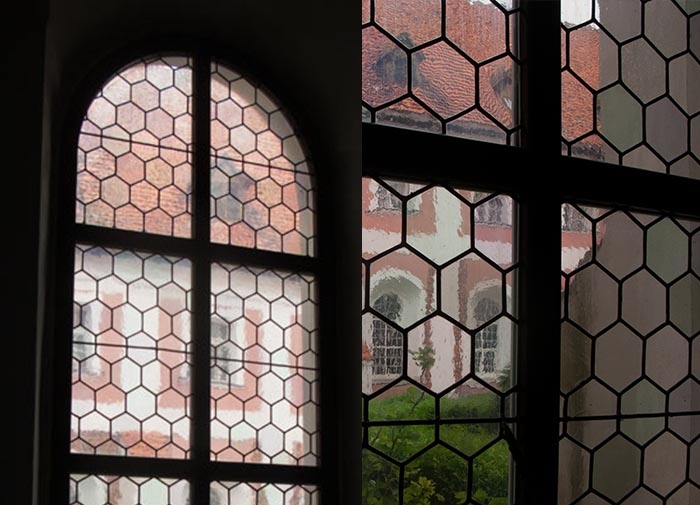Simple stained glass consisting of bigger and more regular shapes. This technique is affordable than classic stained glass and it's simplicity can delight. The use of such glazing type is versatile - from historical architecture to modern lofts.
Geometric glazing - pieces of glass have the shape of regular geometric figures (rhombuses, rectangles, squares, triangles).
Ornamental glazing - similar to geometric glazing, but the shapes of the glass pieces are more complicated (hexagons, circles or a mixed composition).
Glazing combined with classic stained glass - usually, two methods are used: stained glass medallions on the background of geometric glazing or a decorative stained glass frame with a center filled with simple glazing.
Tiffany's glazing - made of large, simple glass elements. But unlike the above techniques, joins are made of copper foil covered with tin (the purpose: joints are more delicate and less visible than the lead canes).
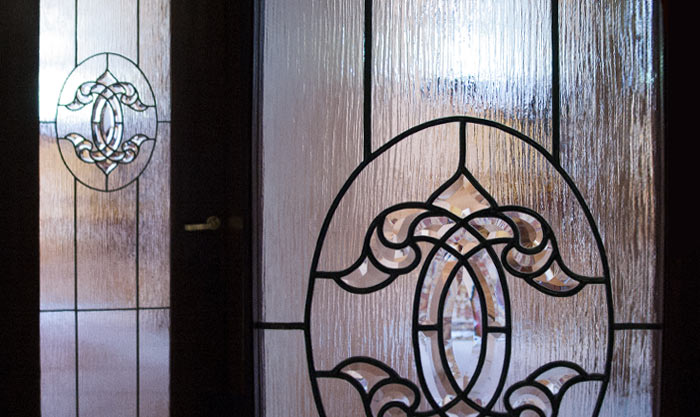
Geometric glazing with stained glass medallion.
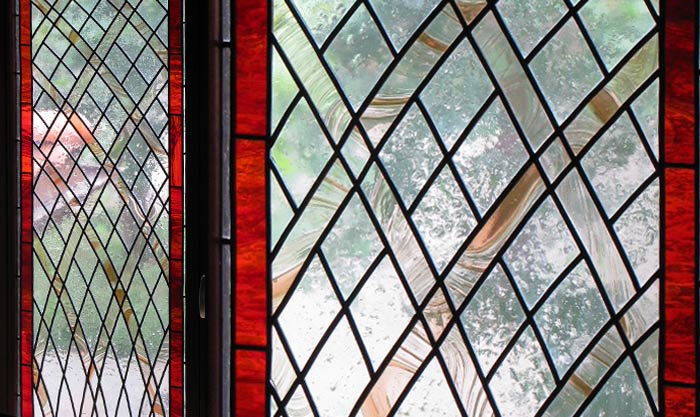
Geometric glazing with decorative border.
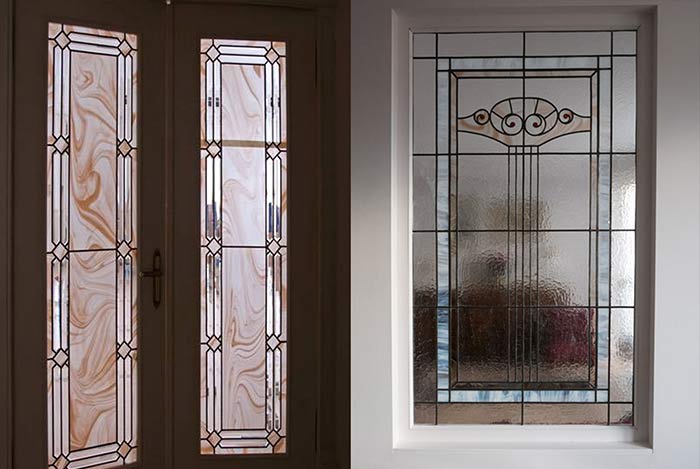
Geometric glazing with beveled frame.
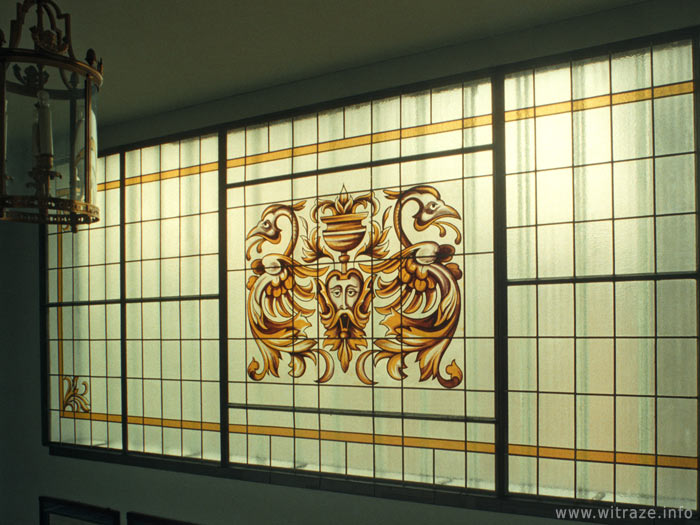
Stained glass glazing with painted elements.
Material. All glass types used for classic stained glass. We use high quality glass, mostly from Germany and US.
Project. Prepared in form of a digital file. We encourage you to visit our Studio in order to see the samples of glass.
Rim finishing. The edges are surrounded by a lead I-section or a steel U-channel. The lead cane is 7 mm thick. The steel channel is 5 mm thick.
Size. Size of the stained glass glazings should not exceed 30 x 40 cm. If it is necessary to fill larger surfaces, they must be additionally strengthened with flat steel reinforcements. We do not recommend strengthening the glazing by placing them between transparent glass panes. This solution "kills" charm of the glazing.
Weight - 1 sq m of glazing depends on the quantity and size of the pieces and also on the density of glass divisions. For a typical design, this weight ranges from 8 to 10 kg.


